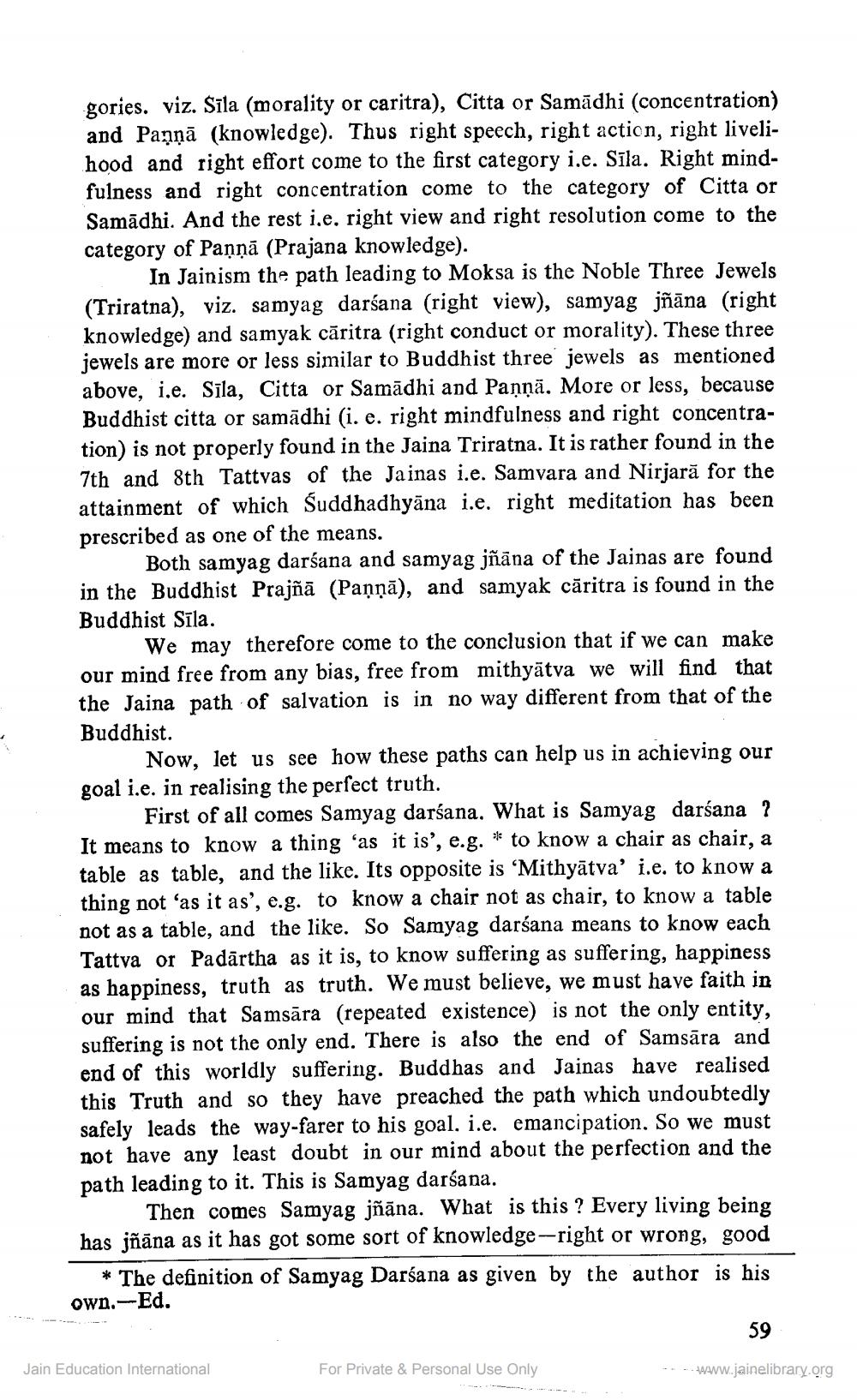________________
gories. viz. Sīla (morality or caritra), Citta or Samadhi (concentration) and Panņā (knowledge). Thus right speech, right action, right livelihood and right effort come to the first category i.e. Sila. Right mindfulness and right concentration come to the category of Citta or Samadhi. And the rest i.e. right view and right resolution come to the category of Paņņā (Prajana knowledge).
In Jainism the path leading to Moksa is the Noble Three Jewels (Triratna), viz. samyag darśana (right view), samyag jñāna (right knowledge) and samyak caritra (right conduct or morality). These three jewels are more or less similar to Buddhist three jewels as mentioned above, i.e. Sila, Citta or Samadhi and Paņņā. More or less, because Buddhist citta or samadhi (i. e. right mindfulness and right concentration) is not properly found in the Jaina Triratna. It is rather found in the 7th and 8th Tattvas of the Jainas i.e. Samvara and Nirjară for the attainment of which Suddhadhyāna i.e. right meditation has been prescribed as one of the means.
Both samyag darśana and samyag jñāna of the Jainas are found in the Buddhist Prajñā (Panņā), and samyak caritra is found in the Buddhist Sīla.
We may therefore come to the conclusion that if we can make our mind free from any bias, free from mithyätva we will find that the Jaina path of salvation is in no way different from that of the Buddhist.
Now, let us see how these paths can help us in achieving our goal i.e. in realising the perfect truth.
First of all comes Samyag darśana. What is Samyag darśana ? It means to know a thing as it is', e.g. * to know a chair as chair, a table as table, and the like. Its opposite is 'Mithyatva' i.e. to know a thing not 'as it as', e.g. to know a chair not as chair, to know a table not as a table, and the like. So Samyag darśana means to know each Tattva or Padartha as it is, to know suffering as suffering, happiness as happiness, truth as truth. We must believe, we must have faith in our mind that Samsara (repeated existence) is not the only entity, suffering is not the only end. There is also the end of Samsara and end of this worldly suffering. Buddhas and Jainas have realised this Truth and so they have preached the path which undoubtedly safely leads the way-farer to his goal. i.e. emancipation. So we must not have any least doubt in our mind about the perfection and the path leading to it. This is Samyag darśana.
Then comes Samyag jñāna. What is this? Every living being has jñāna as it has got some sort of knowledge-right or wrong, good
*The definition of Samyag Darśana as given by the author is his own.-Ed.
Jain Education International
For Private & Personal Use Only
59 www.jainelibrary.org




